If you have a dracaena plant that is suffering from root rot, don’t despair. There are a few things you can do to save your plant. Root rot is a serious problem, but with a little care, you can get your plant back to health. Here are eight steps to take to save your dracaena from root rot:
1. Remove the plant from the pot and inspect the roots. If the roots are black or mushy, they are probably rotted.
2. Cut away any rotted roots with a sharp knife.
3. Rinse the roots in clean water.
4. Allow the roots to dry for a few hours.
5. Repot the plant in fresh, sterile potting mix.
6. Water the plant carefully, making sure not to overwater.
7. Place the plant in a bright, warm location.
8. Monitor the plant closely and continue to water carefully. With a little care, your plant will recover from root rot and be healthy again.
Common Signs of Dracaena Root Rot
If you notice your Dracaena’s leaves turning yellow and wilting, it’s a sign that the plant is suffering from root rot. The leaves will eventually turn brown and die if the root rot is not treated. The roots of the plant are rotting, which is preventing it from taking up water and nutrients from the soil.
If the root rot is severe, you may need to cut away all of the affected roots and start over with a new plant. To treat root rot, you’ll need to remove the affected roots and replant the Dracaena in fresh, well-draining soil.

Keep an eye out for these common signs of root rot so you can catch it early and save your Dracaena!
Stage 1: Early Warning Symptoms of Dracaena Root Rot
If you’re noticing your dracaena plant‘s leaves turning yellow or brown, or if the leaves are wilting, drooping, or falling off, it’s likely that the plant has root rot. Root rot is a serious condition that can kill a dracaena plant if left untreated.
Next, replant the dracaena in fresh, well-draining potting mix. Finally, give the plant plenty of light and air circulation to help it recover. There are a few things you can do to try to save your plant from root rot. Be sure to water the plant carefully, as too much water can cause root rot. First, check the roots to see if they’re mushy or black. If they are, you’ll need to remove them.

With proper care, you may be able to save your plant. If you suspect your dracaena plant has root rot, it’s important to act quickly.
Leaves Turning Yellow
One of the most common problems faced by this plant is root rot, which can quickly kill it if left untreated. When it comes to houseplants, few are as popular as the Dracaena. However, even the most resilient plants can fall victim to disease, and Dracaena is no exception. Also known as the corn plant, this hardy species can thrive indoors with relatively little care.
The first sign of this problem is usually yellowing leaves, followed by wilting and eventually death. If you suspect your Dracaena has root rot, there are a few steps you can take to try and save it. Root rot is caused by overwatering, which leads to fungal growth in the roots.
First, stop watering the plant and allow the soil to dry out completely. If they are mushy or blackened, they will need to be cut away. Once you have removed all the affected roots, replant the Dracaena in fresh, dry soil. Then, remove the plant from its pot and inspect the roots.

With proper care, your Dracaena should recover from root rot and continue to thrive.
The Soil Staying Wet for Prolonged Time
If the pot doesn’t have drainage holes, water will pool at the bottom and the roots will sit in water, causing them to rot. The first step is to check the drainage. If the pot does have drainage holes, make sure they’re not blocked. When the soil of your Dracaena houseplant is constantly wet, it’s a sign of root rot.
The solution is to repot the Dracaena in a pot that’s one size larger. If the drainage is good and the roots are still sitting in water, the next step is to check the size of the pot. If the pot is too small, the roots won’t have enough room to spread out and will become waterlogged.
Let the top inch of soil dry out before watering again. If the pot is the right size but the soil is still wet, the problem may be that you’re watering too often. Dracaenas are drought-tolerant plants and only need to be watered every one to two weeks.
If they’re white and healthy, the problem is in the soil. If you’ve followed all these steps and the soil is still wet, it’s time to check the roots. Gently remove the plant from the pot and examine the roots. If they’re brown and mushy, the roots are already rotting.
If the roots are healthy, the problem is probably that the potting mix is too dense. The solution is to repot the Dracaena in a lighter potting mix. Water won’t be able to drain through it and the roots will stay wet.
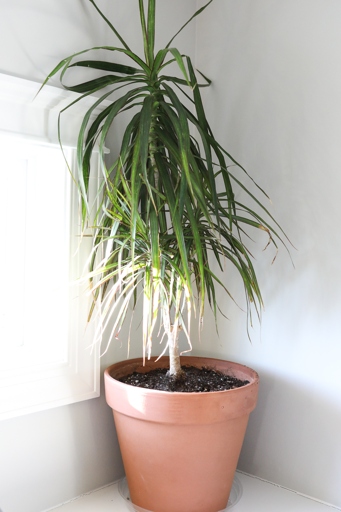
Remove the plant from the pot and cut away any mushy, brown roots. Repot the plant in fresh potting mix and water it well. If the roots are already rotting, the plant will need to be treated for root rot.
Leaves Curling
Here are eight steps to save your Dracaena from root rot: If your Dracaena’s leaves are curling, it could be a sign of root rot. Root rot is a serious problem that can kill your plant.
If they are black or mushy, they are probably rotted. Remove the plant from the pot and inspect the roots. 1.
Cut away any rotted roots with a sharp knife. 2.
3. replant the Dracaena in fresh, sterile potting mix.
4. Water the plant deeply, then allow the soil to dry out completely before watering again.
Keep the plant in a bright, sunny spot. 5.
6. Apply a fungicide to the soil around the plant to help prevent root rot.
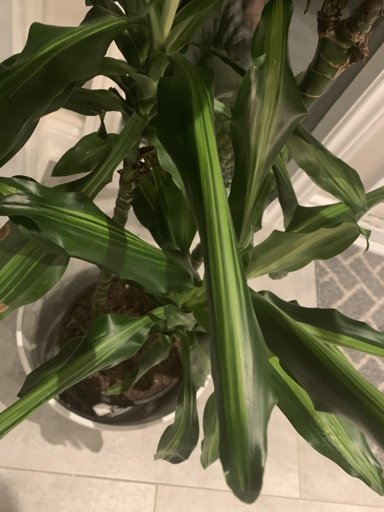
Monitor the plant closely for signs of new growth. 7.
If the plant does not recover, it may need to be replaced. 8.
Stunted or Slow Growth
If you suspect your Dracaena is suffering from stunted or slow growth, there are a few steps you can take to save it. One of the most common problems with Dracaena is stunted or slow growth. This can be caused by a number of factors, including root rot, poor drainage, and insufficient light.
If you find any of these signs, you’ll need to take action to save your plant. First, check for signs of root rot, such as discolored leaves, wilting, or a bad smell coming from the roots.
Next, make sure your Dracaena is getting enough light. If you can’t provide enough natural light, you may need to supplement with artificial lighting. If it’s not, move it to a brighter spot.
Dracaena prefer to be kept moist, but not soggy. Finally, make sure your plant is getting enough water. Allow the top inch of soil to dry out before watering again. If you suspect your plant is getting too much or too little water, you can adjust your watering schedule accordingly.
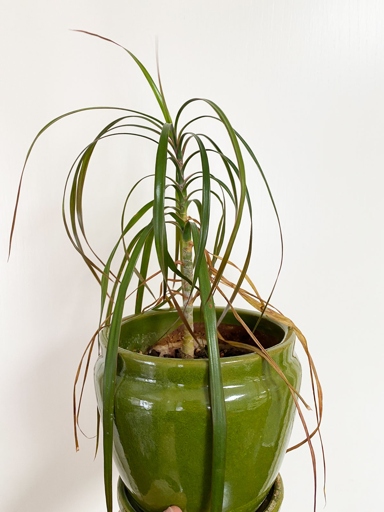
By following these steps, you can save your Dracaena from stunted or slow growth and get it back on track.
Stage 2: Red Alerts of Advanced Dracaena Root Rot
Finally, apply a fungicide to the soil to prevent the infection from spreading. Next, water the plant deeply to flush out the infection. The plant is likely suffering from advanced dracaena root rot, which is caused by a fungal infection. If you notice your dracaena’s leaves beginning to yellow and fall off, it’s time to take action. The first step is to remove the affected leaves and stems.
Consistent Wilting of Leaves
If your Dracaena marginata’s leaves are wilting, it’s a sign that the plant is stressed. Root rot is a serious problem that can kill your plant, so it’s important to take action immediately. The most common cause of stress is root rot, which can be caused by over-watering or poor drainage.
There are a few things you can do to save your Dracaena from root rot. If they are, you’ll need to remove the affected roots and replant the Dracaena in fresh, well-draining soil. First, check the roots to see if they’re black or mushy.
Dracaenas need bright, indirect light to thrive. Be careful not to over-water, as this can worsen root rot. Next, water your Dracaena only when the soil is dry to the touch. Finally, make sure your plant is getting enough light.
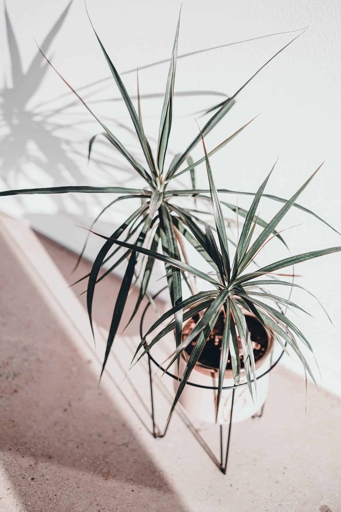
If you take these steps, you’ll be on your way to saving your Dracaena from root rot.
Swollen, and Mushy Stems
Here are 8 steps to save your Dracaena from root rot: If you notice your Dracaena’s stems are swollen and mushy, it’s likely they are suffering from root rot. Root rot is a serious condition that can kill your plant if not treated promptly.
Remove the plant from its pot and inspect the roots. If they are black and mushy, they are affected by root rot. 1.
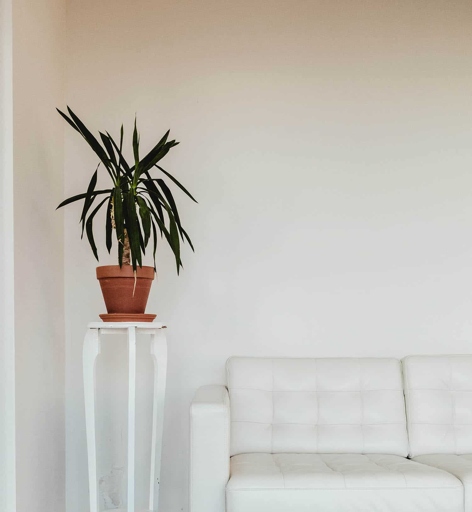
Cut away any affected roots with a sharp knife. 2.
Place the plant in a new pot with fresh, well-draining potting mix. 3.
4. Water the plant deeply, then allow the soil to dry out completely before watering again.
Place the plant in a bright, indirect light. 5.
6. Apply a fungicide to the plant according to the manufacturer’s instructions.
7. Monitor the plant closely and continue to water and fertilize as needed.
If the plant shows no signs of improvement, it may need to be replaced. 8.
Brown Leaves
If you think your Dracaena has root rot, there are a few things you can do to save it. Root rot is a common problem with Dracaena, and it’s usually caused by too much water. If your Dracaena has brown leaves, it’s likely due to root rot.
First, check the roots. If they’re brown and mushy, they’re probably rotten. Cut away any rotten roots, and replant the Dracaena in fresh, well-draining soil.
Water it only when the soil is dry, and don’t let the roots sit in water. Next, water your Dracaena carefully.
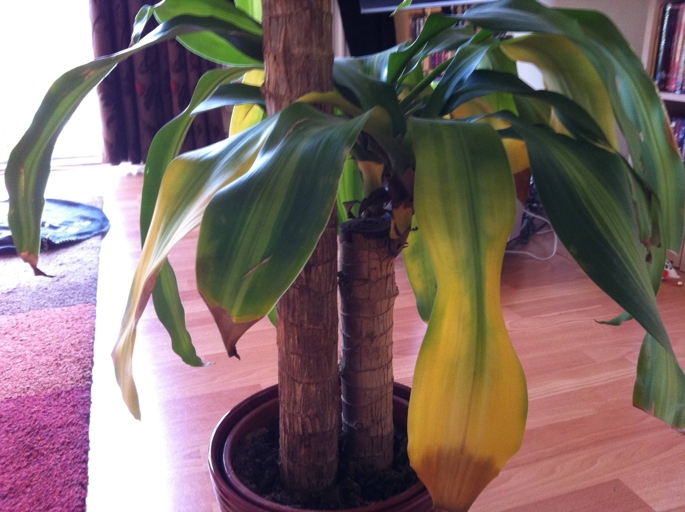
Finally, give your Dracaena some light. Dracaena likes bright, indirect light, so try to give it a spot where it can get plenty of light without being in direct sunlight.
If you follow these steps, you should be able to save your Dracaena from root rot.
Brown or Black and Spongy Roots
If your Dracaena has brown or black, spongy roots, it’s a sign of root rot. Root rot is caused by overwatering, which leads to fungal growth. The best way to save your Dracaena from root rot is to let the soil dry out between waterings. If the roots are already rotted, you can try to save the plant by trimming off the affected roots and replanting in fresh, dry soil.
Rotting Odor from Roots
The first step in saving your Dracaena from root rot is to stop watering it until the soil is completely dry. Once you’ve removed all the affected roots, you can replant your Dracaena in fresh, well-draining soil. If you see any signs of root rot, such as discolored or mushy roots, you’ll need to remove them from the plant. You can do this by gently pulling on the roots until they come free. This condition is caused by overwatering, which leads to the roots being unable to get the oxygen they need to stay healthy. Once the soil is dry, you can start watering again, but be sure to water only when the soil is dry to the touch. If you notice a rotting odor coming from the roots of your Dracaena, it’s a sign that the plant is suffering from root rot.
Stage 3: Late Signs of Dracaena Root Rot
Dracaena root rot is a serious problem that can kill your plant. It is important to catch it early and take action to save your plant.
Stage 3: Late Signs of Dracaena Root Rot
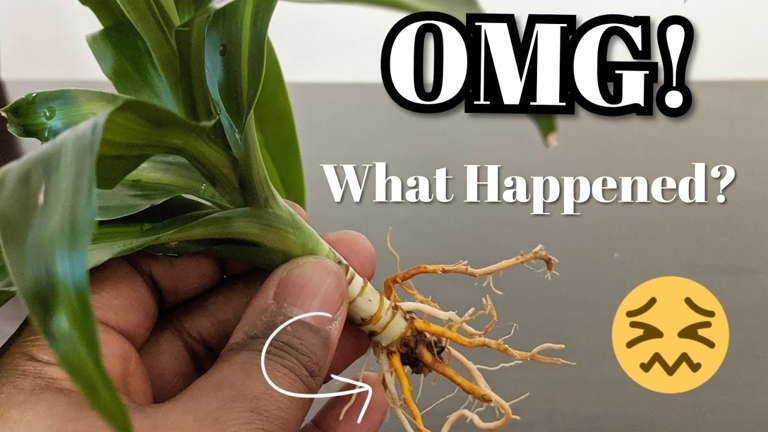
The leaves will turn yellow and brown and fall off. The roots will be rotted and black. The stem will become soft and mushy. If you see these signs, it is important to remove the plant from the pot and replant it in fresh soil. By the time you see the late signs of dracaena root rot, it is often too late to save your plant.
Causes Dracaena Root Rot
There are several different causes of root rot, but the most common is overwatering. Dracaena root rot is a common problem that can affect many different types of plants. This can happen very quickly, and the plant may start to show signs of stress within a few days. When a plant is overwatered, the roots are unable to get the oxygen they need to survive and begin to rot.

This means that the roots are constantly sitting in water, which can lead to problems. If you think your dracaena has root rot, the first thing you should do is check the roots. Dracaena are particularly susceptible to root rot because they are often grown in pots that do not have good drainage. If they are brown and mushy, it is likely that the plant is already too far gone to save.
First, stop watering it immediately and allow the soil to dry out completely. If you catch the problem early, however, there are a few things you can do to try to save your plant. If they are only slightly browned, you can try trimming them back and replanting the dracaena in fresh, dry soil. Then, remove the plant from its pot and inspect the roots.
Be sure to check the roots regularly and take action immediately if you see any signs of stress. Root rot can be a serious problem, but it is often possible to save your plant if you catch it early.
[1] Fungal Infections
Fungal infections are one of the most common problems that can affect a Dracaena plant. If your plant is showing any of the following signs, it may be suffering from a fungal infection:

-Yellowing or wilting leaves
-Leaves that are brown or black at the edges or tips
-Stunted growth
-Mushy or rotten roots
If you suspect that your Dracaena plant has a fungal infection, there are a few things you can do to try and save it.
-First, try to improve the drainage in the pot. If the pot does not have drainage holes, consider repotting the plant into one that does.
-Next, water the plant less frequently, and make sure that the potting mix is allowed to dry out somewhat between waterings.
Be sure to follow the directions on the label carefully. -If the plant is severely infected, you may need to treat it with a fungicide.
By following these steps, you may be able to save your Dracaena plant from root rot.
Treatment, Control, and Prevention of Dracaena Fungal Diseases
However, they are susceptible to a number of fungal diseases that can cause root rot. Dracaena is a genus of popular houseplants that are known for their ease of care.

There are a few things that you can do to help prevent dracaena fungal diseases:
Avoid overwatering. 1. Allow the soil to dry out between watering. Dracaena are susceptible to root rot if they are kept too wet.
Improve drainage. Make sure that the pot has drainage holes to allow excess water to escape. 2.
Give each plant enough space to breathe. 3. Avoid crowded conditions.
Use sterile tools when handling dracaena plants. Sterilize tools. 4.
Remove affected leaves. 5. If you see any leaves that are affected by disease, remove them immediately.
6. When you bring new plants into the home, quarantine them for a few weeks to make sure they are not bringing in any diseases. Quarantine new plants.
If you do see signs of disease, you can use a fungicide to help treat it. Use fungicides. 7.
In some cases, the only way to prevent the spread of disease is to destroy affected plants. Destroy affected plants. 8.
[2] Overwatering
Here are 8 steps to help save your Dracaena from root rot: If you’re reading this, it’s likely your Dracaena is already showing signs of overwatering. The good news is, it’s not too late to save your plant!
This is the most important step in saving your plant. Stop watering your plant immediately. 1.
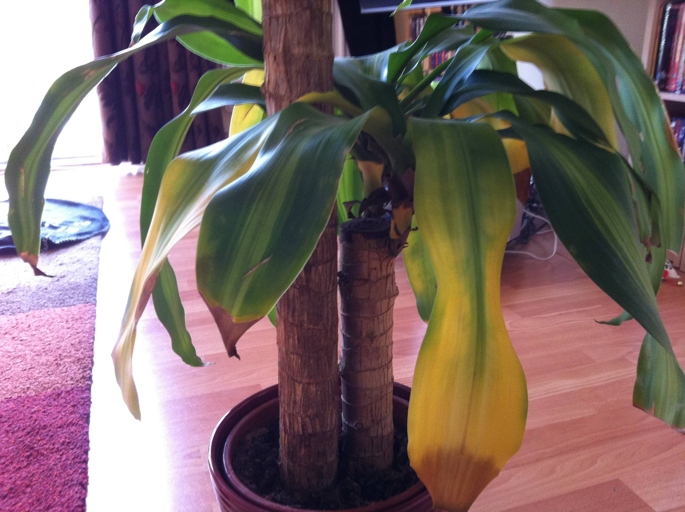
If they are mushy or black, they are already dead. Remove the plant from its pot and inspect the roots. Cut away any dead roots with a sharp knife. 2.
3. Rinse the roots with clean water to remove any dirt or debris.
4. Allow the roots to dry completely before replanting in fresh, dry potting mix.
Water your plant only when the potting mix is dry to the touch. 5. Stick your finger into the potting mix to check before watering.
Place your plant in an area with bright, indirect light. 6.
Keep an eye on your plant and continue to check the roots. 7. If they start to look mushy or black again, repeat steps 2-4.
By following these steps, you can save your overwatered Dracaena and get it back to good health!
Solution
Root rot is caused by too much water and can quickly kill a plant. If you think your plant has root rot, there are a few things you can do to save it. When it comes to houseplants, root rot is one of the most common problems.
If they are mushy or black, they are probably rotting. Cut away any rotten roots and repot the plant in fresh, dry soil. First, remove the plant from the pot and check the roots.
Next, water the plant carefully. Water the soil, not the leaves, and allow the soil to dry out between waterings. Avoid overwatering, which can lead to root rot in the first place.

Finally, give the plant some extra TLC. Place it in a bright spot and keep an eye on it to make sure it is not overwatered. With a little care, your plant should recover from root rot and be healthy and happy again.
[3] Poor Soil Drainage
Root rot is caused by waterlogged soil, which prevents oxygen from reaching the roots. You can also add perlite or vermiculite to improve drainage. The first step to saving your plant is to improve the drainage of the soil. You can do this by adding organic matter, such as compost, to the soil. If the root rot is severe, you may need to repot the plant in fresh, well-draining soil. If your Dracaena plant is wilting, has yellow leaves, or its stem is softening, it may have root rot.
Solution
When it comes to houseplants, few are as popular as the Dracaena. However, even the hardiest of plants can fall victim to disease, and one of the most common problems faced by Dracaena is root rot. Also known as the “corn plant,” this tough and easy-to-care-for species can thrive indoors for years with the proper care.
Root rot is caused by a build-up of water in the soil, which leads to the growth of harmful fungi. If left untreated, root rot can spread to the rest of the plant, killing it. These fungi attack the roots of the plant, causing them to rot and eventually die.
Here are eight steps to take to save your plant from root rot: Fortunately, root rot is relatively easy to treat, and with a little care, your Dracaena can be healthy and thriving once again.
Remove the plant from the pot and inspect the roots. If they are black or mushy, they are likely rotten and will need to be removed. 1.
Cut away any rotten roots with a sharp knife. 2.
Place the plant in a new pot with fresh, well-draining potting mix. 3.

4. Water the plant deeply, then allow the soil to dry out completely before watering again.
Place the plant in a bright location, but out of direct sunlight. 5.
Apply a fungicide to the plant to help prevent further root rot. 6.
7. Monitor the plant closely and continue to water and fertilize as needed.
With a little care, your Dracaena will soon be healthy and thriving once again. 8.
[4] Dracaena Soft Rot
However, there are some things you can do to save your plant. Dracaena soft rot is a serious problem that can quickly kill your plant.
First, try to catch the problem early. Watch for signs of stress, such as wilting leaves or yellowing foliage. If you see these signs, take a closer look at the roots. If they are discolored or mushy, that’s a sign of root rot.
Remove the affected roots and replant the dracaena in fresh, well-draining potting mix. Next, take action to save your plant. Water the plant carefully, making sure not to overwater.
Finally, keep an eye on the plant and watch for any further signs of stress. If the plant doesn’t recover, it may need to be replaced.
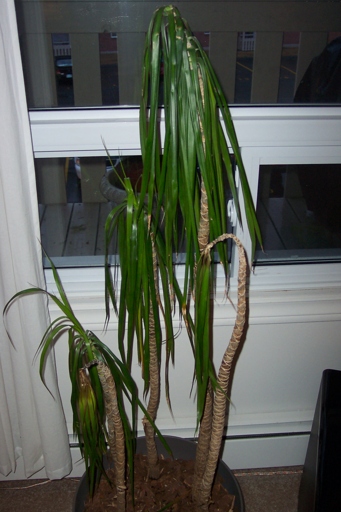
With a little care, you can save your dracaena from root rot.
Solution
This can cause the roots to rot, which can eventually kill the plant. Root rot is caused by overwatering, which leads to the plant’s roots being unable to get the oxygen they need. When it comes to houseplants, root rot is one of the most common problems.
There are a few things you can do to save your plant from root rot. If they’re brown or black, that’s a sign that they’re already starting to rot. The first step is to check the roots. If the roots are still white, that’s a good sign.

Allow the soil to dry out completely before watering again. This will give the roots a chance to recover. The next step is to stop watering the plant.
If the roots are already badly damaged, you may need to repot the plant. Be sure to water the plant carefully, as overwatering can lead to root rot. Use fresh potting mix and a new pot.
By following these steps, you can save your plant from root rot.
[5] Inadequate Drainage
This can lead to a number of problems, including root rot. When it comes to houseplants, one of the most common problems is inadequate drainage.
Root rot is caused by a build-up of water in the soil, which can lead to the roots of the plant being unable to get the oxygen they need. This can cause the leaves of the plant to turn yellow and eventually drop off.
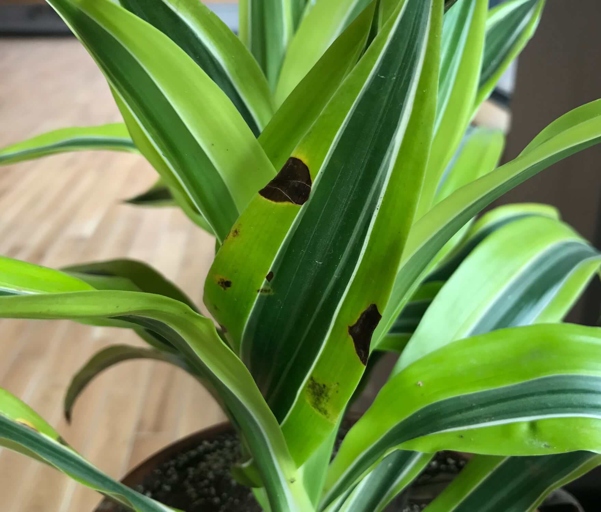
Let the soil dry out between watering, and if you’re using a saucer under your pot, empty it out after each watering. Make sure you use a well-draining potting mix, and don’t water your plant too often. There are a few things you can do to prevent inadequate drainage from happening in the first place.
If your plant is already showing signs of root rot, it’s important to take action quickly. Remove the plant from its pot and gently rinse the roots with clean water. Allow the plant to dry out completely before replanting in fresh, well-draining potting mix.
Solution
If you think your plant has root rot, there are a few things you can do to save it. Root rot is caused by too much water, which can lead to fungal growth. When it comes to houseplants, root rot is one of the most common problems.

Cut away any rotten roots with a sharp knife. If they are mushy or black, they are probably rotten. First, take the plant out of its pot and inspect the roots.
Be sure to use a pot with drainage holes to prevent the roots from sitting in water. Next, replant the plant in fresh potting mix.
Finally, water the plant carefully. Allow the soil to dry out between waterings to prevent the roots from rotting again.
If you catch root rot early, there’s a good chance you can save your plant. By following these steps, you can get your plant back to good health in no time.
[6] Wrong Pot Size
The plant will then start to yellow and wilt, and eventually die. One of the most common problems when it comes to houseplants is wrong pot size. This can be a death sentence for your plant, as the roots are unable to properly grow and establish themselves. The plant will eventually become root bound, and the lack of oxygen will cause the roots to rot.
Overwatering is one of the leading causes of root rot, so be sure to let the soil dry out between waterings. If you’re not sure, it’s better to err on the side of caution and go with a pot that is too small rather than too large. To avoid this problem, make sure to choose a pot that is only slightly larger than the root ball of your plant. Once you’ve selected the right pot, make sure to provide your plant with the proper amount of water and drainage.
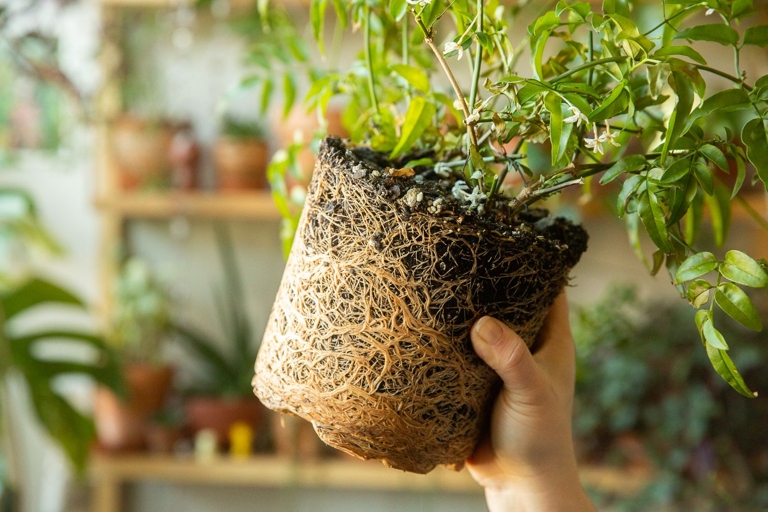
By following these simple tips, you can help ensure that your houseplants stay healthy and thrive for years to come.
Solution
If you’re noticing that your Dracaena is wilting, yellowing, or its leaves are drooping, it may be a sign of root rot. But don’t worry, there are a few things you can do to save your Dracaena from root rot. Root rot is a serious problem that can kill your plant if left untreated.
First, you’ll want to check the roots of your plant. This may mean repotting your Dracaena into a new pot with fresh soil. Once you’ve removed the affected roots, you’ll need to water your Dracaena less often. Allow the soil to dry out completely between watering. If they’re mushy or black, it’s a sure sign of root rot. Next, you’ll need to remove the affected roots.

If you catch root rot early, there’s a good chance you can save your Dracaena. By following these steps, you can get your plant back to good health in no time.
[7] Low-Temperature
Root rot is caused by too much moisture in the soil, which can be due to overwatering, poor drainage, or high humidity. If your Dracaena is suffering from root rot, there are a few things you can do to save it. Once you’ve identified the problem, you can take steps to correct it. First, you’ll need to identify the problem.
To save your Dracaena from root rot, you’ll need to:
Improve drainage. If your plant is in a pot, make sure there are drainage holes in the bottom. If you’re growing your Dracaena in the ground, make sure the soil is well-draining. 1.
Water your Dracaena only when the top inch of soil is dry. Reduce watering. 2.
If your plant is in a pot, move it to a spot where it will get more air circulation. 3. If you’re growing your Dracaena in the ground, make sure it’s not crowded by other plants. Increase air circulation.

If you’re growing your Dracaena in the ground, you can increase humidity by misting the leaves. 4. Improve humidity. If your plant is in a pot, you can increase humidity by setting the pot on a tray of pebbles and water.
Prune away affected leaves. 5. If your Dracaena has leaves that are yellowing or wilting, you can prune them away to improve the plant’s overall health.
By following these steps, you can save your Dracaena from root rot and get it back to good health.
Solution
Root rot is a serious problem for Dracaena plants. If left untreated, it can kill the plant. There are several things you can do to save your Dracaena from root rot.
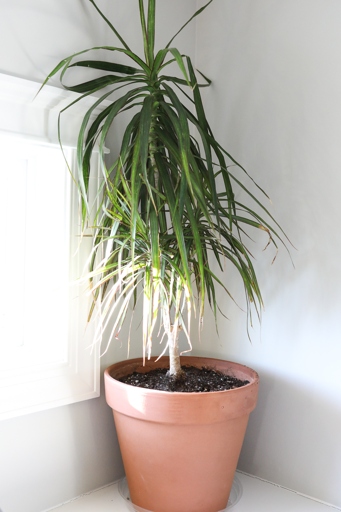
Remove the plant from the pot and inspect the roots. If they are black or mushy, they are infected with root rot. 1.
Cut away any infected roots with a sharp knife. 2.
Treat the remaining roots with a fungicide. 3.
Repot the Dracaena in fresh potting mix. 4.
Water the plant carefully, making sure the potting mix is always moist but not soggy. 5.
Place the plant in a warm, sunny location. 6.
7. Keep an eye on the plant and repeat steps 2-6 if necessary.
In this case, it is best to dispose of the plant to prevent the root rot from spreading to other plants. If the plant is severely infected, it may not be possible to save it. 8.
[8] Watering During Dormancy
When it comes to watering your Dracaena during dormancy, there are a few things to keep in mind. First, you’ll want to reduce the amount of water you give the plant. Second, allow the soil to dry out completely between watering. And finally, don’t fertilize during this time.
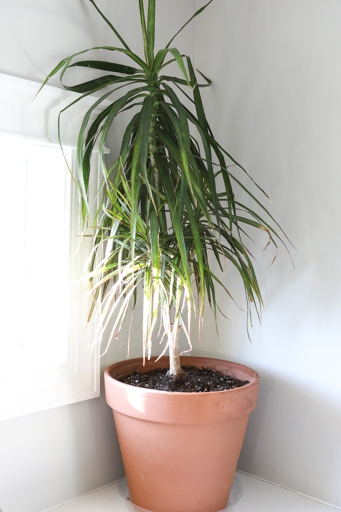
By following these simple steps, you can help your Dracaena avoid root rot and stay healthy during its dormant period.
Solution
When Dracaena plants develop root rot, it’s important to take immediate action to save the plant. Root rot is a serious condition that can quickly kill a Dracaena plant.
There are a few things you can do to save a Dracaena plant with root rot. If the roots are black and mushy, they need to be removed. Cut away the affected roots with a sharp knife, being careful not to damage the healthy roots. First, remove the plant from the pot and inspect the roots.

Next, replant the Dracaena in fresh, sterile potting mix. Be sure to water the plant carefully, as too much or too little water can exacerbate root rot.
Once the plant starts to recover, you can gradually increase its watering schedule. Finally, monitor the plant closely for signs of new growth. With proper care, your Dracaena plant should make a full recovery from root rot.
[9] Poor Air Circulation
There are a few things you can do to improve air circulation around the roots of your Dracaena: One of the main causes of root rot in Dracaena is poor air circulation. When the air around the roots is stagnant, it creates an environment that is conducive to the growth of fungi and other organisms that can cause rot.
-Make sure the pot you are using has drainage holes in the bottom.

-If you are growing your Dracaena in a container that does not have drainage holes, make sure to water it very sparingly.
-Make sure the pot is not placed in an area where there is not a lot of air movement, such as in a corner of a room.
-If you are growing your Dracaena outdoors, make sure it is in a location where there is plenty of air circulation.
Solution
Root rot is a serious problem for dracaena plants. This can happen for a number of reasons, including overwatering, poor drainage, or compacted soil. The roots of the plant become waterlogged and begin to decompose.
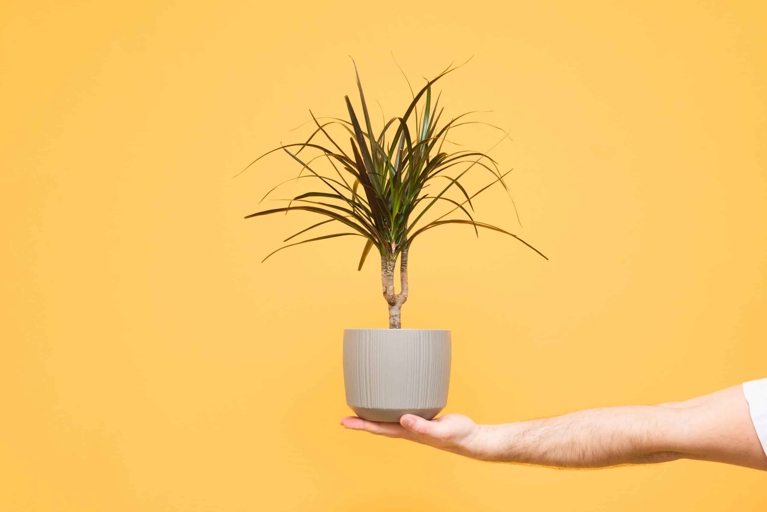
Root rot is a serious problem that can kill your dracaena plant. The best way to prevent it is to water your plant regularly and make sure the soil has good drainage. If you think your plant has root rot, you should take it to a nursery or garden center for treatment.
[10] Contaminated Gardening Tools
But what you may not know is that your tools can also be a source of contamination. If you’re a gardener, you know that your tools are essential for keeping your plants healthy and your garden looking its best.
These contaminants can then be transferred to other plants, causing them to become sick. Gardening tools can become contaminated with soilborne diseases, pesticides, and other chemicals.
Here’s how: To protect your plants, it’s important to clean and disinfect your gardening tools on a regular basis.
1. Start by cleaning your tools with soap and water.

Next, disinfect your tools using a solution of one part bleach to nine parts water. 2.
3. Finally, dry your tools completely before storing them.
By taking these simple steps, you can help prevent the spread of disease and keep your plants healthy.
Solution
However, even the hardiest of plants can fall victim to root rot. When it comes to houseplants, few are as popular as the Dracaena. This tough plant can tolerate a wide range of conditions, making it a great choice for beginner gardeners.
The first step in saving a Dracaena with root rot is to remove it from the pot. Root rot is a serious condition that can quickly kill a Dracaena. This will allow you to inspect the roots and determine the extent of the damage.
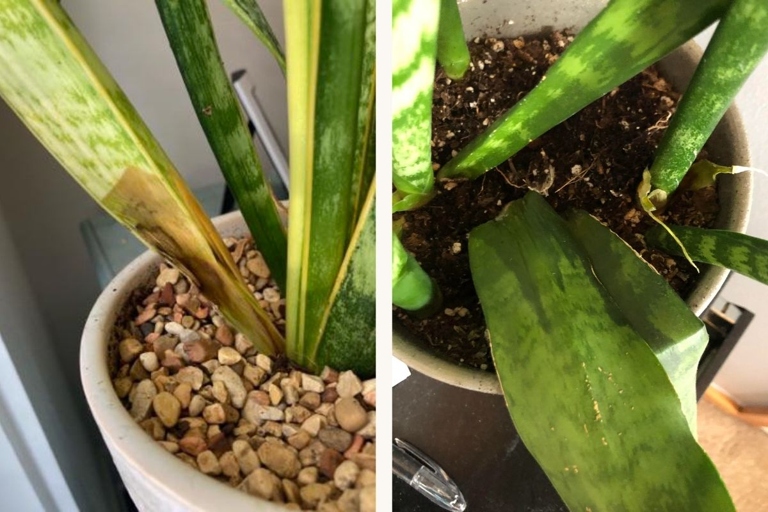
Once the damaged roots have been removed, the plant can be replanted in fresh potting mix. If the roots are black and mushy, they will need to be trimmed away. Be sure to water the plant regularly, as root rot is often caused by too much moisture.
However, it is important to act quickly, as this condition can spread quickly and kill the plant. With proper care, a Dracaena with root rot can be saved.
How to Save Your Dracaena from Root Rot
If you think your Dracaena has root rot, don’t despair. There are a few things you can do to save your plant.
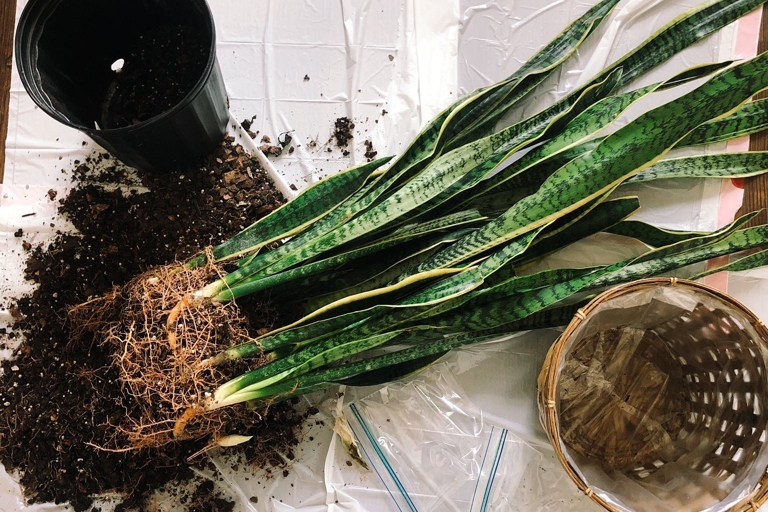
Cut away any affected roots, being careful not to damage the healthy roots. First, take a look at the roots. If they’re brown and mushy, that’s a sure sign of root rot.
Next, replant your Dracaena in fresh, well-draining potting mix. Be sure to water it regularly, but don’t overdo it – root rot is caused by too much moisture.
Finally, give your plant some time to recover. With proper care, your Dracaena should bounce back from root rot and be as good as new.
Step 1: Stop Watering
Allow the soil to completely dry out before watering again, and be sure to empty any water that collects in the saucer beneath the pot. This may seem counterintuitive, but overwatering is the most common cause of root rot, so it’s important to give your plant a chance to dry out. If you’re not sure how often to water, err on the side of caution and wait a few extra days. If your Dracaena is suffering from root rot, the first step is to stop watering it.
Step 2: Remove the Infected Leaves and Other Plant Parts
This will help to prevent the spread of the infection to other parts of the plant. If you notice any other infected plant parts, such as the roots, stem, or flowers, you should also remove these. To remove the infected leaves, simply cut them off at the base with a sharp knife. If you notice that your dracaena plant has any infected leaves or other plant parts, it is important to remove them as soon as possible.
Step 3: Unpot the Plant and Dry out the Root System
Inspect the roots for signs of rot, such as discoloration or mushiness. To unpot the plant, gently remove it from the pot and shake off any excess soil. If your Dracaena has root rot, the third step is to unpot the plant and dry out the root system. If the roots are damaged, you will need to cut them away and start fresh with a new plant. This will allow you to inspect the roots for damage and to determine if they can be saved. If the roots are still firm and healthy, you can replant the Dracaena.
Step 4: Trim off the Infected Roots
Here’s how to do it: If the roots of your Dracaena are infected, you’ll need to trim them off. This can be a difficult task, but it’s necessary to save your plant.
Start by trimming off any visibly infected roots. 1.
Next, use a sharp knife to carefully remove any remaining infected roots. 2.
3. Finally, trim away any damaged or diseased leaves.

By taking these steps, you’ll be able to save your Dracaena from root rot.
Step 5: Repot Using New Soil and Pot
Be sure to also water your plant properly after repotting it. When it comes to repotting your Dracaena, be sure to use new soil and a new pot. This will help to ensure that your plant does not continue to experience root rot.
Step 6: Watering after Repotting
Avoid overwatering, which can lead to root rot. Watering after repotting is important to help the roots of your Dracaena adjust to their new environment. Be sure to water slowly and evenly, until the water begins to drain from the bottom of the pot. Allow the soil to dry out slightly between watering.
Step 7: Care after Repotting
After repotting your Dracaena, it is important to give it the proper care to ensure that it does not experience root rot. Here are a few tips to follow:
Allow the soil to dry out in between waterings. -Water your Dracaena regularly, but do not over-water it.
-Make sure that the pot has drainage holes to allow excess water to drain out.
-Fertilize your Dracaena every month during the growing season.

-Place your Dracaena in an area with bright, indirect light.
By following these tips, you can help your Dracaena thrive and prevent it from experiencing root rot.
Step 8: Propagating Dracaena
Root rot is a common problem with Dracaena, and can be caused by several factors, including overwatering, poor drainage, and compacted soil. When propagating Dracaena, it is important to take care of the roots.

If you suspect that your Dracaena has root rot, it is important to take action immediately. There are several signs of root rot, including yellowing leaves, wilting, and stunted growth.
Dip the cut end of the stem in rooting hormone, and plant it in a pot of well-draining potting mix. To propagate Dracaena, start by taking a cutting from a healthy plant. Cut a stem that is at least 6 inches long, and remove the lower leaves. Keep the soil moist, but not wet, and in a few weeks, you should see new growth. Water the cutting well, and place it in a warm, sunny spot.
Treating root rot with Chemical Fungicide
Here are a few tips for using chemical fungicide to treat root rot: This is because fungicide can kill the fungi that is causing the root rot, while also helping to prevent future outbreaks. When it comes to treating root rot, chemical fungicide is often the best course of action.
There are many different fungicides on the market, so it is important to choose one that will be effective against the fungi that is causing the root rot. Be sure to choose a fungicide that is specifically designed to treat root rot. 1.
This will ensure that the fungicide is used correctly and that it is effective against the root rot. Follow the directions on the fungicide label carefully. 2.
3. Apply the fungicide to the affected area of the plant. Be sure to cover the entire area that is affected by the root rot.
4. This will help to prevent the fungicide from being washed away by the water. Allow the fungicide to dry completely before watering the plant.
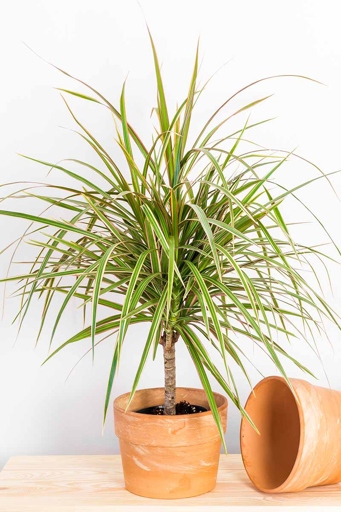
This will help to keep your plants healthy and free from this destructive disease. By following these tips, you can effectively treat root rot with chemical fungicide.
Homemade Fungicide for Dracaena Root Rot
Dracaena root rot is a serious problem that can kill your plant. However, there are some things you can do to save it.
If you see these signs, it’s important to act quickly. The signs of this problem include yellowing leaves, wilting, and stunted growth. Dracaena root rot is caused by a fungus that attacks the roots of the plant. First, you need to identify the problem.
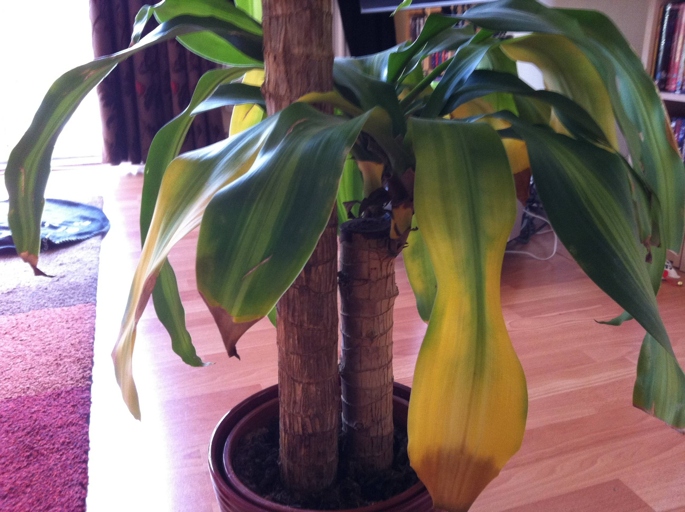
This mixture will kill the fungus that’s causing the root rot. You can do this by mixing one part bleach with nine parts water. Next, you need to take action to save your plant. One way to do this is to make a homemade fungicide.
After you’ve applied the fungicide, you should see a noticeable difference in the health of your plant. Be sure to wear gloves and protective clothing when doing this. Once you’ve made the fungicide, you need to apply it to the affected area.
By following these steps, you can save your plant from this serious problem. If you think your plant is suffering from root rot, don’t hesitate to take action.
Charcoal
Here are 8 steps to take: Charcoal is a natural way to help save your Dracaena from root rot.
Remove the plant from its pot and inspect the roots. 1. If they are black or mushy, they are likely rotted and will need to be removed.
Cut away any rotted roots with a sharp knife. 2.
3. Place the plant in a pot filled with fresh, well-draining potting mix.
4. Water the plant thoroughly, then allow the potting mix to dry out completely before watering again.
Add a handful of charcoal to the potting mix. 5. This will help to absorb excess moisture and prevent root rot.

Place the plant in a bright location, but out of direct sunlight. 6.
7. Check the roots periodically and remove any that are black or mushy.
With proper care, your Dracaena should recover and thrive. 8.
Cinnamon
It has been used for centuries as a flavoring agent in food and as a traditional medicine. Cinnamon is a spice that is derived from the inner bark of trees in the genus Cinnamomum. Cinnamon is a source of antioxidants and has been shown to have anti-inflammatory, antimicrobial, and blood sugar-lowering properties.
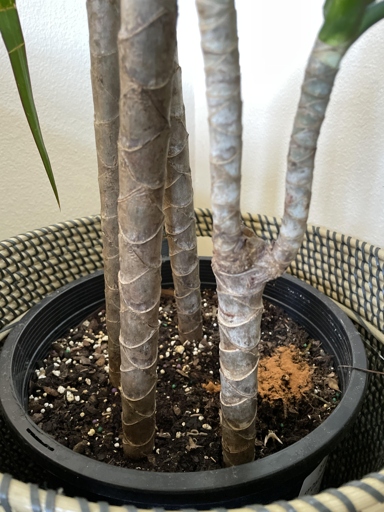
To use cinnamon to treat root rot, simply add a teaspoon of cinnamon powder to a gallon of water and apply it to the affected area. Cinnamon can help to control root rot by inhibiting the growth of fungi and bacteria. Root rot is a common problem in these plants, and it can be caused by a variety of factors, including overwatering, poor drainage, and soil-borne pathogens. Cinnamon can be used to help treat root rot in Dracaena plants.
Chamomile
When brewed as a tea, chamomile is thought to be a relaxant, can be helpful in restoring insomnia, and be a soothing detoxifier of the gut. Chamomile (Matricaria chamomilla) is a dried flower that can be found pre-packaged at most health food stores. Chamomile can be enjoyed fresh or dry, and is easily brewed with just a small handful of chamomile blossoms yielding about 2 ounces. Chamomile tea infusion has a sweet—fruity taste and is naturally caffeine-free.
Frequently Asked Questions
1. What is Dracaena root rot?
Dracaena root rot is a condition that affects the roots of the Dracaena plant. The roots of the plant become mushy and discolored, and the plant may eventually die if the condition is not treated.
2. What are the causes of Dracaena root rot?
There are several possible causes of Dracaena root rot, including overwatering, poor drainage, and soil that is too dense.
3. What are the signs of Dracaena root rot?
The signs of Dracaena root rot include yellow or wilted leaves, mushy or discolored roots, and stunted growth.
4. How can I save my Dracaena from root rot?
There are several steps you can take to save your Dracaena from root rot. These steps include improving drainage, removing affected roots, and using a fungicide.
5. What should I do if I think my Dracaena has root rot?
If you think your Dracaena has root rot, you should consult with a professional. They will be able to help you diagnose the problem and recommend a course of treatment.
Final thoughts
If you think your Dracaena has root rot, don’t despair. By following these 8 simple steps, you can save your plant and get it back to good health in no time. Just be sure to keep an eye out for the signs of root rot, so you can catch it early and take action quickly.
